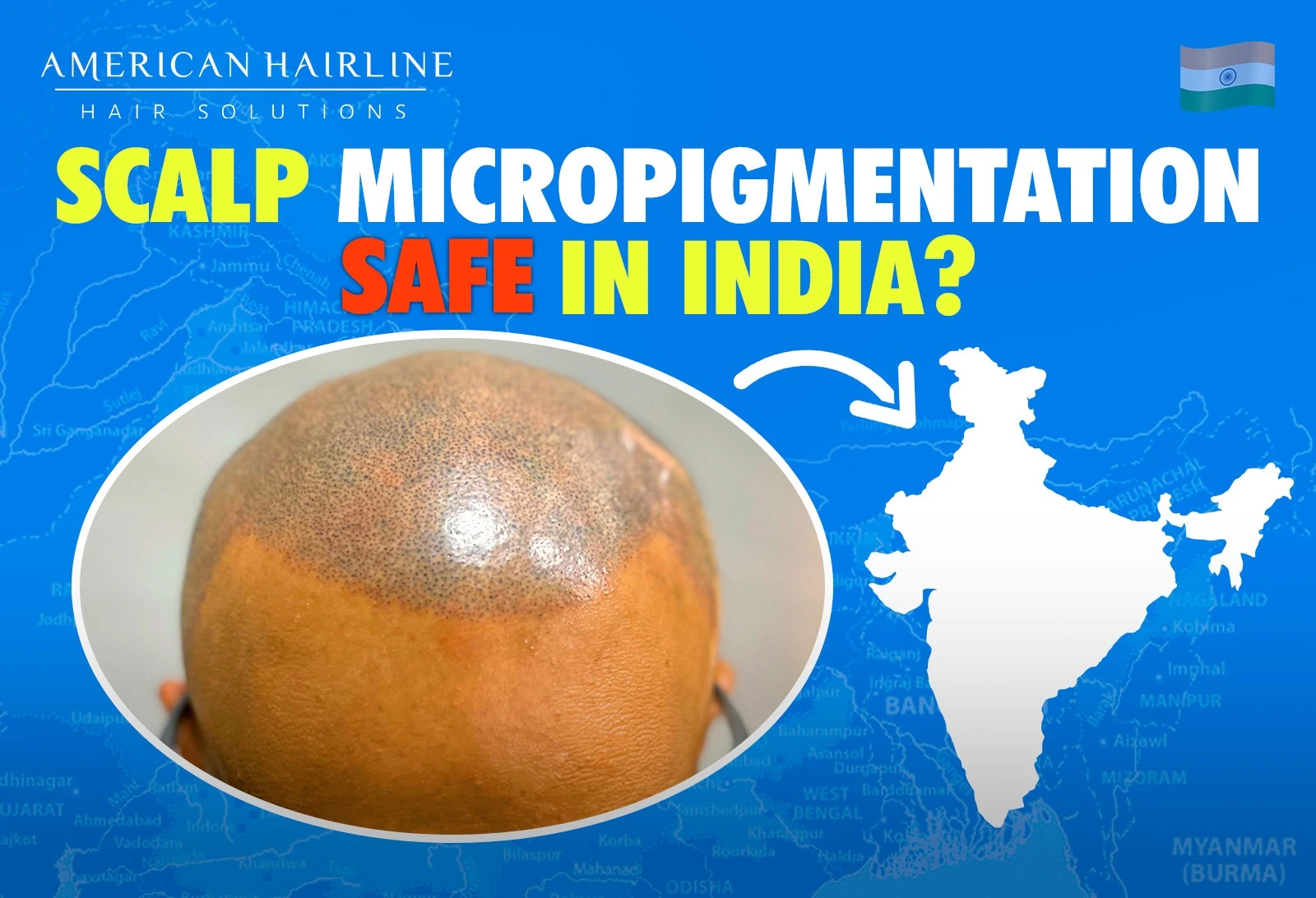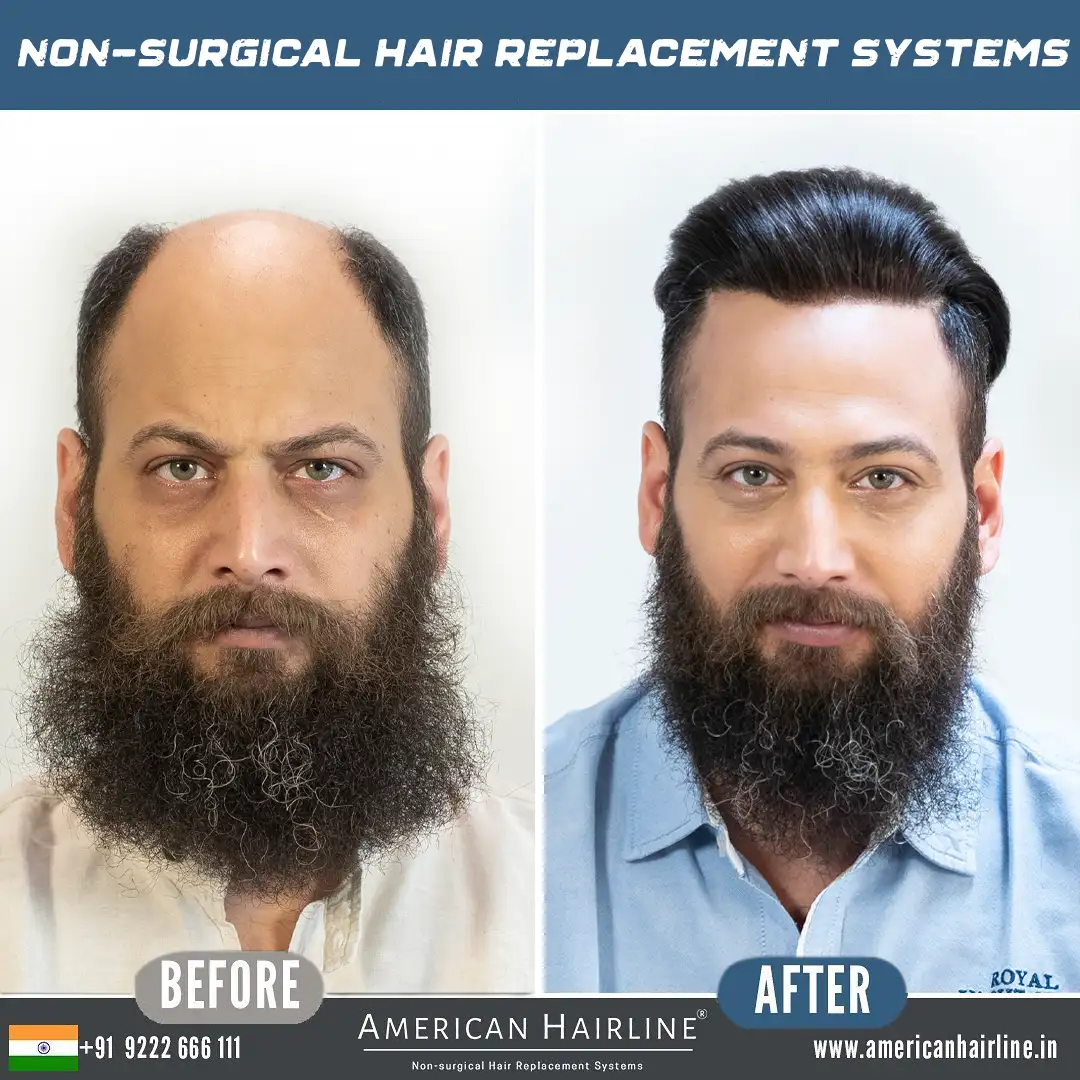Worried about going bald? You’re not alone. Many Indian men struggle with hair loss, but scalp micropigmentation could be the solution you’re looking for. This cutting-edge procedure uses thousands of tiny pigment deposits to recreate the look of a full head of hair. The results are so natural that even under close inspection, no one can tell the difference. In this article, I’ll discuss whether scalp micropigmentation is safe
for Indian men. We’ll look at the possible side effects, what to expect during and after the procedure, average cost in India, and how it compares to other hair loss treatments like hair transplants. Stick with me to get the full scoop so you can decide if scalp micropigmentation is right for you.
| Table of Contents |
| Understanding Scalp Micropigmentation (SMP) |
| Scalp MicroPigmentation Safe for Alopecia? |
| Benefits of Getting SMP |
| What to Expect During SMP Process |
| Scalp MicroPigmentation FAQs |
What Is Scalp Micropigmentation?
Scalp micropigmentation treatment (SMP), also known as scalp tattooing, is a non-surgical hair loss solution that creates the look of a buzz cut hairstyle. It involves depositing natural pigments into the scalp skin using a specialized tattoo machine equipped with ultra-fine needles.
- The pigments match your natural hair color and when skillfully applied on the scalp, it appears like you have closely shaved hair stubble. This provides the illusion of fuller hair and effectively masks any visible bald patches or thinning areas.
- SMP can help restore confidence for men dealing with progressive hair loss by camouflaging a receding hairline, filling sparse areas on the crown, or covering scars from transplants or injuries. It is a permanent solution that requires multiple sessions over several weeks by trained SMP artists.
- When done right, SMP offers a natural, subtle effect that looks like real shaved hair. It won’t damage existing hair follicles. And unlike wigs or hair systems, you don’t have to worry about attachment methods or high maintenance. Just wash and go!
So if you’re a man in India struggling with hair loss and want an effective way to restore the look of a full head of hair without surgery, SMP is worth considering. Just be sure to do your research and choose an experienced, reputable SMP clinic that uses high-quality, safe inks to minimize risks.
Is Scalp MicroPigmentation Safe for Alopecia in India?
Scalp micropigmentation in India can be a great option for managing alopecia in India. With proper technique and inks, SMP is considered quite safe. However, there are a few things to keep in mind:
- Make sure to go to an experienced, reputable SMP artist. Look for specialists certified in SMP for alopecia. They will use proper techniques and inks specifically formulated for scalp treatments.
- Allergic reactions can occur but are rare with quality pigments. Do a patch test ahead of full treatment. Speak up about sensitivities.
- Some temporary side effects like redness, swelling, and scabbing are normal as the skin heals. This typically resolves within a week.
- Results last 1-3 years before needing a touch up. Maintenance visits refresh the pigment.
- Unlike a tattoo, SMP pigment rests in the upper dermis so can be removed if needed down the road. Multiple treatments may be required.
The key is finding an SMP artist experienced with alopecia cases. When proper protocols and inks are used, SMP can be a safe, effective option for reducing the look of bald patches and restoring confidence. Just do your homework to find a reputable provider.
Benefits of Getting SMP for Full Head in India
Getting scalp micropigmentation (SMP) for a full head in India can have many great benefits for men dealing with hair loss.
- SMP creates the look of a buzzed head with short stubble across your entire scalp. This can make thinning hair or a receding hairline much less noticeable.
- It provides the appearance of fuller density and coverage across the top of your head, masking large areas of sparse hair growth.
- Restore your Front hairline with SMP, filling in recession around the temples and forehead to frame your face.
- The pigmentation visually reduces the contrast between your scalp and hair follicles for a more consistent, shaved head look.
- It can cover scars from hair transplant surgery, blending them into the simulated follicles.
- Full head SMP takes under 8 hours total, with multiple shorter sessions. It saves you time compared to meticulously maintaining hair systems.
- The results look natural and realistic. The micro pigmentation mimics the look of your own cropped hair.
- It is safe, non-surgical, and the pigment fades over 1-3 years, so it is lower commitment than hair transplants for men.
- SMP can boost your self-confidence and give you the freedom to sport a buzzed style without revealing thinning hair.
Consider full head SMP in India if you want a shaved, shadow look without anyone knowing you have hair loss underneath. It’s quick, safe, and offers natural-looking coverage.
What to Expect During and After Your Scalp Micropigmentation Procedure
Aftercare Scalp micropigmentation is a straightforward process, though the experience will vary slightly depending on the provider you choose. Here’s an overview of what you can expect:
- You’ll begin with a consultation to determine the treatment area and desired results. Your technician will likely trim and clean the area first.
- The technician will use a handheld device with tiny needles to apply medical-grade pigment into the scalp. This will likely feel like a vibrating pen drawing on your scalp. There may be some mild discomfort.
- The first session often takes 2-4 hours depending on the size of the area being treated. Multiple sessions spaced 4-6 weeks apart are usually needed to build up the pigment and achieve the look of a fuller hairline and thicker hair.
- Immediately after, the scalp may look swollen, red, and slightly bloody. This is normal. There will likely be some mild scabbing and crusting as it heals over the next week or so. Don’t pick at scabs as they can pull out the pigment.
- Once healed, the best scalp micropigmentation results should look natural – not like a tattoo. No one should be able to tell you had the procedure done unless you tell them.
- Over time, some fading is normal. Most providers recommend a touch up session every 2-3 years to keep the results looking sharp. Proper scalp care and sun protection will help the pigment last.
The bottom line is that scalp micropigmentation is considered very safe when performed by a licensed, experienced technician. It does not damage hair follicles. Just be patient during the healing process and take care of your scalp afterwards. The end results can be transformative for men dealing with hair loss or thinning hair in India.
Scalp MicroPigmentation FAQs: Your Top Questions Answered
Wondering how scalp micropigmentation works or if it’s right for you? Here are answers to some of the top frequently asked questions about this popular non surgical hair loss solution in India:
No, SMP is not the same as a regular tattoo. It uses different equipment, pigments, and techniques. The pigment is applied more superficially than a traditional tattoo.
SMP typically lasts for several years, but it can fade over time. Touch-up sessions may be required every few years to maintain the look.
Pain levels vary from person to person, but SMP is generally less painful than traditional tattooing. Most clients experience only mild discomfort.
Typically, SMP requires 2-4 sessions, spaced about a week apart. This can vary based on individual needs and the extent of hair loss.
Yes, SMP can be used to camouflage scars, including those from hair transplant surgery, as well as birthmarks.
Aftercare involves keeping the scalp dry for a few days post-treatment, avoiding sun exposure, and not picking or scratching the treated area. Detailed aftercare instructions will be provided by your practitioner.
Most people can return to work the next day. However, the scalp may appear slightly red for a few days following each session.
Conclusion
You’ve seen how scalp micropigmentation can be a safe and effective option for you in India to deal with bald spots, hair transplant scars, thinning hair, receding hairlines and more. While results vary for each person, thousands of men in India have chosen SMP and been happy with making their hair look fuller and scalp less visible. The technology and training have improved greatly in recent years, so you can feel confident choosing a reputable SMP artist in India for natural-looking, lasting results. Give it some thought and do your research to see if scalp micropigmentation could be right for you too.
If you are confused and need to know about which would be the right one, you can probably call us on +919222666111 or WhatsApp us.









I believe that genuine effort and assistance play a crucial role in creating excellent posts. This is my first visit to your website, and I’m astounded by the depth of research evident in producing such an outstanding article, especially on topics as intricate as Scalp Micro Pigmentation. The thoroughness and clarity provided on such a specialized subject are truly commendable. Fantastic work!